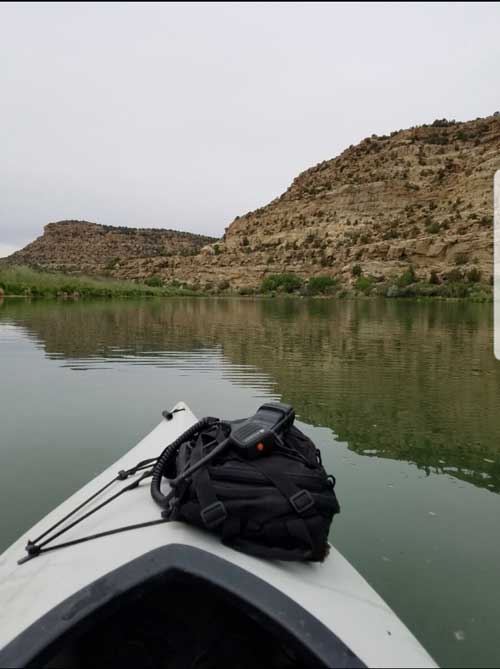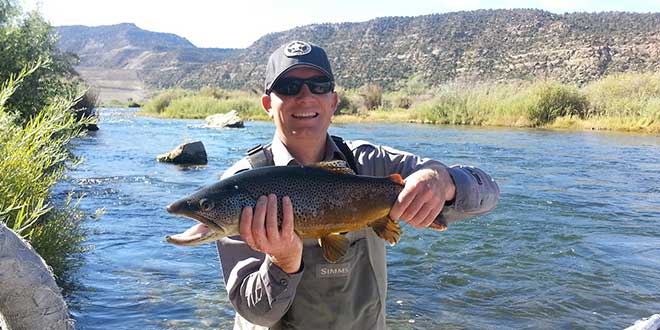The San Juan River, located in the northwest corner of our state, has one of the best tail waters for trout fishing in New Mexico. The Special Trout Waters consist of 3.75 miles of river from Navajo Dam downstream to the Crusher Hole day use area. This section is located within Navajo Dam State Park and a day use pass or annual parks pass is required. The Special Trout Waters are managed through a cooperation of four agencies, including the New Mexico Department of Game and Fish, New Mexico State Parks, the Bureau of Land Management and the Bureau of Reclamation. This collaboration encompasses both state and federal agencies and regulations.
Special Trout Waters have very specific regulations including what types of hooks, how many flies can be used on a line and catch and release fishing only. All the specific rules for the Special Trout Waters can be located in the New Mexico Department of Game and Fish Rules and Information Booklet (pages 18-19). When you visit, be sure to look for the signs posted along with the Special Trout Waters as well, designating it as a “Red Chile Water.”
The average number of fish per mile in the Special Trout Waters is approximately 24 thousand, with a combined 3.75 mile total of 90 thousand fish, according to Christopher Wethington, the Department’s San Juan River trout fisheries biologist. Due to this unique habitat structure, trout enthusiasts and anglers travel from all over the world to enjoy the best fishing the state of New Mexico has to offer. High angler demand from both local and out of state anglers leads to a high average annual angler usage of 234,819 hours. That is a lot of hours spent fishing during the year.
This small section of the San Juan River supports a vast fly-fishing guide industry. Numerous fly shops specialize in fly fishing supplies and angling experiences. These businesses are located close to the Special Trout Waters in the town of Navajo Dam, allowing anglers to stop and get advice on flies that will work for the area, stock up on necessary angling supplies or purchase a current fishing license.
Law enforcement efforts by the Department’s conservation officers are conducted primarily through foot patrol along the banks of the river. These patrols can also include wading the river to check individuals that are not accessible from the river bank. To check non-motorized boats on the river, officers often use kayaks. Officers can easily check licenses and tackle alongside the drift and other non-motorized boats with little interference from oars or the hassle of anchoring a larger boat. The view from a kayak allows officers to see anglers from a greater distance since the river offers an open viewing plane. Officers try to patrol from kayas as often as they can. It allows them to also look at habitat issues along the river such as beaver dams blocking water flow in back channels along the river.

If you are planning a trip to the Special Trout Waters on the San Juan River, read up on the specific rules and regulations. Stop in at one of the local fly shops for advice on the best flies for the area and local knowledge of the river.
If you want a guided fishing trip, you can look online or book through one of the local fly shops. You never know you might see a conservation officer on your trip. Enjoy the fishing.
Shaler Wells is a corporal with the Navajo Dam District at the Department of Game and Fish.
 New Mexico Wildlife magazine Conserving New Mexico's Wildlife for Future Generations
New Mexico Wildlife magazine Conserving New Mexico's Wildlife for Future Generations
